Feature
Taking an Ecosystem Approach to STEM Learning
The Synergies Project as Case Study
Connected Science Learning March 2016 (Volume 1, Issue 1)
By John H. Falk, Lynn D. Dierking, Nancy Staus, Jennifer Wyld, Deborah Bailey, and William Penuel
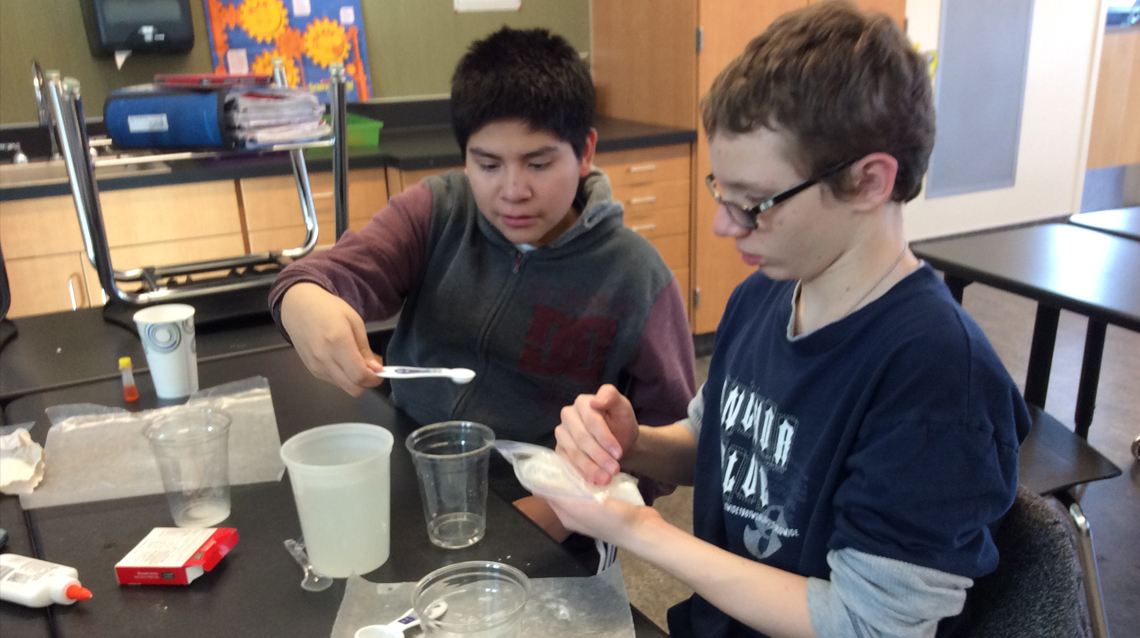
Explore the Synergies project, a case study for how to comprehensively integrate three exemplary teaching practices into a STEM-learning ecosystem.
The nature of STEM (science, technology, engineering, and mathematics) learning is changing as individuals have unprecedented, 24/7 access to science-related information and experiences from cradle to grave. Today’s science-education opportunities include not only traditional schooling, but also libraries, museums, zoos, aquaria, science centers, and parks and preserves; diverse broadcast media such as television, podcasts, and film; organized youth programs such as 4-H, after-school or summer camps, and special-interest clubs and hobby groups; and an ever-increasing array of digital media such as personal games, the internet, and social media. Collectively, these formal and informal resources are referred to as the STEM learning ecosystem. The concept of an ecosystem has also been expanded to include not only material resources such as institutions and organizations, but also social ones: social networks, peers, educators (in school and out of school), friends, and family. In total, the ecosystem is “the dynamic interaction among individual learners, diverse settings where learning occurs, and the community and culture in which they are embedded” (NRC 2015, pp. 1–2). These various organizations and tools enable a growing number of individuals to customize and take charge of their own STEM learning.
This shift in the nature of STEM learning has not been fully understood or embraced by the educational establishment; however, that is changing. According to a new National Research Council (NRC) report, Identifying and Supporting Productive STEM Programs in Out-of-School Settings (NRC 2015), the United States should strive toward a community-wide ecosystem approach to STEM education, one that connects STEM learning experiences across the day and over a lifetime.
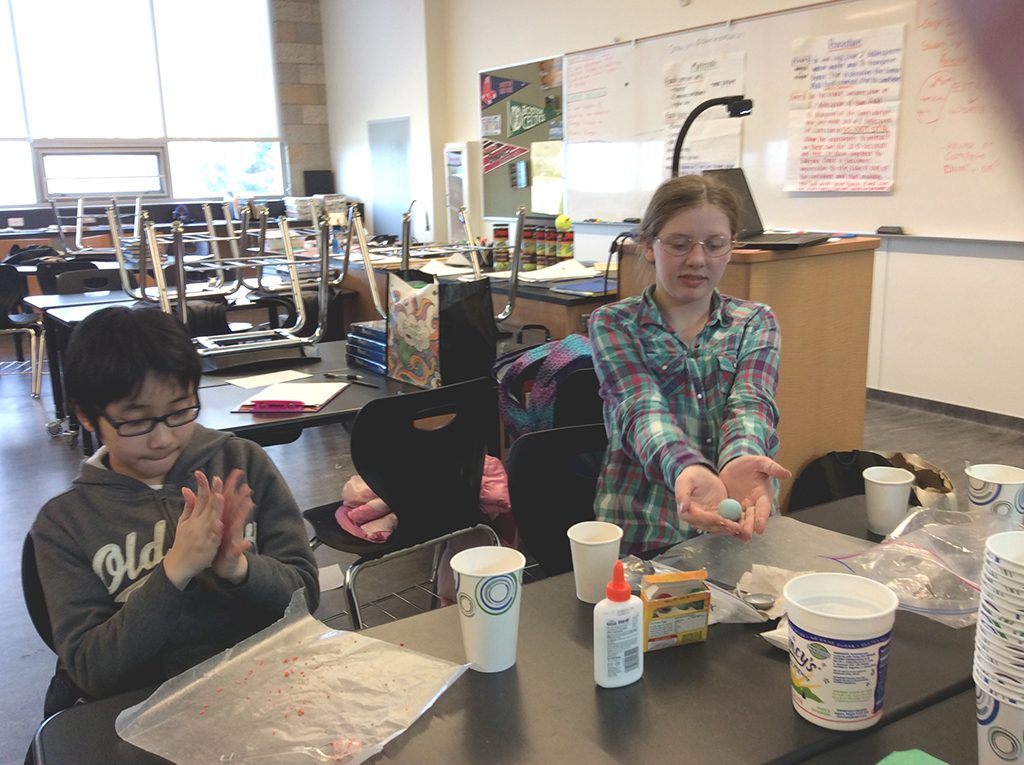
The NRC report summarizes a growing body of STEM-learning research and evaluation studies conducted within many fields, including formal education, youth development, cognitive and social development, informal learning, and out-of-school time. The report concludes that STEM learning results from dynamic interactions that occur over time among the diverse settings in which learning occurs (e.g., home, school, youth groups, hobby clubs, museums, libraries, after-school programs), the community and culture in which these activities are embedded, and the characteristics of the learner (e.g., interests, dispositions, values). In particular, the report notes that successful STEM education programs
- are intellectually, academically, socially, and emotionally engaging to youth;
- are responsive to youths’ interests, experiences, and cultural practices; and
- make connections between formal and informal education experiences.
We present the Synergies project as a case study for how to comprehensively integrate these three exemplary practices into a STEM-learning ecosystem.
Synergies: An Overview
Beginning with a planning year in 2010 and with support from the Noyce, Lemelson, and National Science Foundations, our research team, based at Oregon State University, initiated the Synergies research-practice partnership in Portland, Oregon (see sidebar). Our goal was to create a more effective and synergistic community-wide education system. We selected the Parkrose community because it is small and relatively self-contained, with most of the education resources found in any U.S. city (i.e., schools, museums, after-school programs, libraries, parks), as well as the socioeconomic challenges of most urban areas.
Although a neighborhood of Portland, Parkrose is unique in many ways. It is geographically bound, cut off from the rest of Portland on three of its four boundaries (two by freeways, one by the Columbia River), and it is the area of Portland with the highest crime and unemployment rates in the city. Although metropolitan Portland is primarily white, the majority of the Parkrose community is made up of minorities. Although almost 40% of Parkrose residents are Caucasian, over half are recent immigrants from Eastern Europe. Parkrose has its own school district made up of four elementary schools, one middle school, and one high school. Seventy-nine percent of children at the middle school qualify for free or discounted meals and over 50 languages are spoken among the 1,200 children in the district. Thus, Parkrose represents a microcosm of urban America.
We also selected Parkrose because community members and partners welcomed our involvement. They were uniformly open to change, excited about being a community-based laboratory, and committed to improving the lives of the community’s children. In conceptualizing Synergies, the goal was to determine to what extent we could design a research study that would provide both fundamental understandings about how diverse youth in an under-resourced community become interested and engaged in science (or not) across settings, situations, and time frames. We also wanted to examine whether these data could be used to engage a community in rethinking and redesigning its STEM-learning ecosystem. In this article, we describe our efforts to integrate the three NRC recommendations into the Parkrose ecosystem.
Engaging Youth
The heart of a quality STEM-education ecosystem is building upon and nurturing the personal curiosity, realities, and interests of youth. To this end, Synergies takes a learner-centered approach, studying STEM interest and participation through the lens of a single cohort of approximately 200 Parkrose youth as they move through their personal science-learning ecosystems, including physical resources (i.e., classrooms, after-school programs, libraries, parks); social networks of family, friends, and teachers (in school and out of school); and digital resources, including Minecraft and search engines such as Google. From the outset, we were committed to the idea that changes to education practice should be built on sound research, so over the first five years of the project, we collected interest and participation data from all youths annually (as well as intensive, monthly case study data from 20 youths).
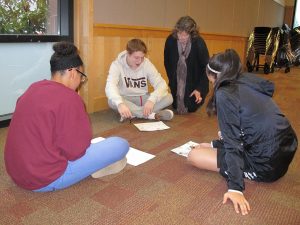
We started when participants were in fifth grade (age 10 or 11); they are now in high school. Synergies directly addresses adolescent interest and participation in STEM, with the goal of transforming Parkrose into a place where youth can engage in sustained, firsthand experiences with STEM phenomena and materials, maintained by the entire ecosystem (in school and out of school). This was not the reality in Parkrose in 2010. The middle school offered few after-school programs; none were STEM-related. Not only were Parkrose science-education resources fragmented, but often, residents also did not fully appreciate the resources that did exist, nor completely understand the resources’ potential. Additionally, many youth and families lacked social capital and agency to use these resources more regularly and effectively. Unfortunately, this is the case in many diverse, under-resourced communities such as Parkrose with high numbers of immigrant families.
At critical junctures, we also hired Parkrose “youth researchers” at an hourly wage. These high school–age youth helped us better understand, from a youth and local Parkrose perspective, the range of choices and venues that middle school–age youth encounter, their views of science, and the issues, realities, and “ground truth” of the system we are studying. During our first year, we taught these youth a variety of skills, including how to conduct open-ended interviews and create videos. Youth researchers reflected upon their own science experiences and conducted interviews with 10- to 14-year-old Parkrose youth. This helped us understand what types of science-related activities and practices Parkrose youth might be engaging in. Youth also created videos about what science meant to them, sharing these at a public meeting attended by parents, community leaders, school and informal educators, school administrators, and the press.
Responding to Youths’ Needs and Interests
Successful citizenship in the 21st century increasingly requires a foundation of interest, facility, and comfort with STEM ideas, practices, and fields (NRC 2011). Some individuals will build on this foundation to pursue STEM academically and professionally, whereas others will use their STEM interest and understanding to pursue science-related hobbies and pursuits. All will require this foundation to make informed political, social, and economic decisions. Thus, it is essential to broaden and deepen access to and participation in quality science education for all youth, especially youth from communities or social groups that historically have not been fully represented in science fields or science-related hobbies and pursuits (e.g., low income, minorities, females).
STEM interest during early adolescence, particularly between ages 10 and 14, has been shown to be key to predicting involvement in continued STEM education, careers, and hobbies (see Falk et al. 2015). Children whose STEM interest is developed and sustained are likely to become adults who pursue STEM interests at home and work. However, despite considerable efforts to encourage STEM interest and participation among youth, a range of indicators suggest that improvements in facilitating and sustaining STEM interest and participation, particularly among those in poor, under-resourced communities, have been modest at best (Griffiths and Cahill 2009; NRC 2015; Osborne, Simon, and Collins 2003).
Therefore, a major focus of our research is on how STEM interests change during adolescence and what factors (e.g., school, parents, peers) seem to influence these changes over time. Similar to previous research (see Osborne, Simon, and Collins 2003), our data show that on average, youth interest in STEM topics and activities declined significantly over the four-year period between fifth and eighth grades (note: one exception was interest in technology, which remained constant over this period). Findings have allowed us to be strategic about the educational institutions and organizations we invite to partner with us and the science programming we offer. For example, survey results indicated that most middle school youth were interested in science topics and practices (e.g., doing experiments) and technology-related topics and activities (e.g., designing and playing video games). Therefore, we initially focused on partnering with 4-H to offer an after-school science club and Pixel Arts Game Education to teach youth how to design interactive new-media games. Both programs were hugely successful, serving 20–40 youth per program in the first year they were offered. The science club has now expanded to two days per week to accommodate interested youth, and there is a Science/Art Club and weekly “Patterns in Art and Puzzles” club to build math interest; Pixel Arts continues to offer these programs. With help from both Synergies and Pixel Arts staff, interested youth also have connected with the local high school gaming club and participated in gaming events in the greater Portland area. In addition, Girls, Inc., has offered sessions about “real-life math,” a nine-week curriculum about managing personal finances, including a bank field trip to expose young women to math-related careers.
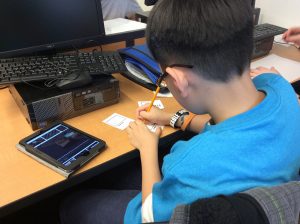
However, because the research followed the same youth for four years, rather than sampling different youth at different times, we see that not all youth have the same levels and trajectories of interest over time. In fact, most of the overall decline in STEM interest observed was attributable to only about a quarter of youth whose STEM interest sharply declined between sixth and seventh grades. The interest of another 40% remained relatively stable, and for about a third, science and math interest remained high and technology interest actually increased significantly. In other words, traditional efforts to address declining youth STEM interest appear to make the assumption that interest can be developed or supported with one-size-fits-all solutions, such as changing how science is taught in classrooms or providing better preparation for teachers (Osborne and Collins 2000; Woolnough 1994). However, the STEM interest groups that emerged within our data indicate that youth are actually exhibiting different phases of interest, with the majority showing situational interest in STEM topics or activities, whereas about a quarter have crossed a threshold into emerging individual interest.
A large body of research indicates that youth in different phases of interest development require different interventions to successfully support their interest development (Hidi and Renninger 2006). For example, studies indicate that youth with an emerging individual interest in STEM reported that their parents had much more positive attitudes toward science than youth who were STEM-disinterested. Therefore, one intervention that partners will incorporate into programming is family nights, during which youth can participate in engaging STEM activities with their parents and siblings, fostering an important connection between family and STEM interest.
Partners have also committed to offering a variety of activities that will include more challenging extensions to support the well-developed individual enthusiasm of STEM-interested youth who have demonstrated some persistence in re-engaging with STEM over time. At the same time, partners will offer more personalized support and scaffolding for youth in less-developed phases of STEM interest, who are triggered by the environment and situation in which they find themselves (e.g., being drawn in by a novel hands-on activity). The goal is to support youths’ opportunities to develop deeper individual interest in STEM over time by building from whatever triggered the situational interest.
Connecting STEM Learning
We have argued that quality science learning is best supported through a healthy and robust community-wide ecosystem. In most communities, there is a lack of coordination and cooperation between science-education providers, in school and out of school, resulting in a fragmented set of science-education resources and offerings. A critically important Synergies finding was how disconnected STEM learning in school and out of school was for most youth. A striking example was that a large group of youth became interested in astronomy after a sixth-grade astronomy unit. Both survey and interview results showed that even STEM-disinterested youth connected strongly with astronomy. In fact, one case-study youth who had shown little interest in science declared that she wanted to become an astronomer after the unit. However, because there were no readily available astronomy out-of-school programs, this triggered situational interest remained unsupported and gradually dissipated. This finding and others like it highlight the importance of connecting the STEM learning that takes place in schools with related out-of-school programs to ensure that youth with situational interest in STEM have ample opportunities for those interests to develop over time and become sustained.
We are taking a two-pronged approach to strengthen the Parkrose STEM-learning infrastructure:
- recruiting and encouraging existing Portland and Oregon formal and informal education institutions and organizations to more actively support Parkrose STEM learning, and
- hiring a community coordinator to promote STEM and broker relationships between formal and informal institutions and organizations.
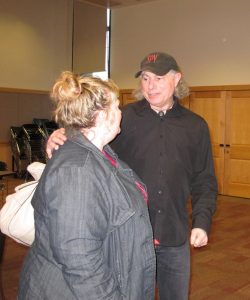
Over the first five years of the project, we built community alliances and initiated planning for community-wide “interventions,” working to engage as many of the community’s education players as possible (i.e., formal and informal educational organizations and institutions and educators, parents, community leaders, youth themselves) in the redesign of the STEM-learning ecosystem. We established relationships with a variety of organizations: Oregon Museum of Science and Industry (OMSI), Schools Uniting Neighborhoods (SUN) schools, Oregon ASK (Oregon Afterschool Network), Mt. Hood Community College, Port of Portland Engineering Outreach, Oregon MESA, and Multnomah County Libraries. By establishing strong working relationships with these and other partners (18 total; see box), we were able to significantly enhance the community’s informal STEM infrastructure at minimal added cost, even with the addition of the half-time community coordinator, whose position is proving to be cost-effective. Most partners had existing funding from either operational or program grants, and the goal from the beginning was to leverage these existing human and financial resources to build a sustainable ecosystem. Many of these institutions and organizations are interested in developing further STEM programming, and we will continue to work with them over the coming years to offer more out-of-school STEM opportunities in the future.
Critical to the functioning of the ecosystem is the Synergies community coordinator, who is responsible for the day-to-day organization and coordination of Parkrose STEM efforts. This person provides on-the-ground coordination with education partners (including the schools), parents, and community “connectors.” The coordinator also forges connections between teachers and after-school providers with the goal of supporting youths’ seamless learning, in and out of school. She has office space at the middle school two days per week, assists with after-school offerings, and meets regularly with the after-school SUN coordinator and all STEM faculty at the middle school, as well as the district-level director of school improvement. As we integrate more community partners, she will also liaise between those organizations and the school, with the goal of identifying community resources that extend youth STEM interest beyond the school day.
Critically, all partners actively contributed to the development of a Parkrose STEM Education Plan, a multistep process of convening senior leadership among our existing 16 partners. Meetings were structured so that our team shared research findings, built consensus around strategies, and organized working groups. Smaller working groups created specific research-based plans around specific “challenges” (e.g., engaging parents, leveraging peer interest) highlighted by findings. The resulting plan was circulated among the partners for review; a final version was approved by the 16 institutions and organizations. The plan is designed to build on existing youth interest and participation when it is there; foster interest and participation when it is waning, with particular attention to issues such as the influence of family and peers; and use all community resources to accomplish these outcomes.
Key aspects of the plan ensure that:
- All partners are treated as equals.
- Each of the Parkrose STEM learning opportunities interconnect.
- Every Parkrose STEM-education provider knows what other providers are doing, as well as what youth in their programs are interested in outside of the program.
We envision a learning ecosystem in which school teachers know what youth do during the summer and in after-school programs and encourage them to connect those experiences. At the same time, after-school and summer STEM educators know what youth are doing in school and work to make those connections relevant. One proposed plan for addressing these goals is to provide opportunities for classroom teachers and informal educators to meet during the school year and coordinate and connect their activities, in school and out of school. Also, at the end of each school year, a classroom teacher will share a “brokering document” for each youth with any educator working with the youth in the summer. In turn, educators who work with youth over the summer will share a similar “brokering document” for each youth with the next year’s teacher. This easy-to-fill-out document will include information about the youth’s progress and interest in STEM. We also plan to create an interactive calendar of youth activities in school and out of school that can be accessed by school teachers, after-school and summer STEM educators, and parents and youth. These three proposed strategies and tools (i.e., regular meetings between school teachers and after-school and summer STEM educators, a brokering document, and an interactive calendar of youth activities in school and out of school) will be tested in the next phase of the project.
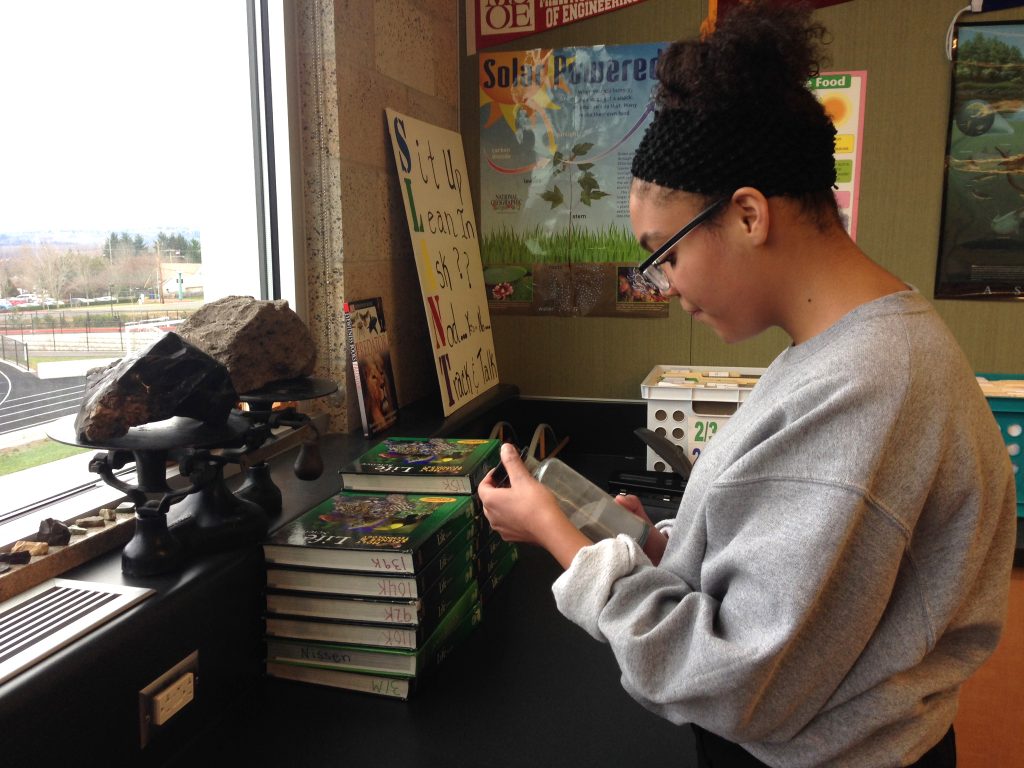
Conclusions
For the past 100 years, both the public and policy makers have come to believe that the words learning, education, and school were synonymous; today, however, public STEM education does not just happen in school. Today’s learners spend only a fraction of their lives in a classroom, and most learning is free-choice, driven by an individual’s needs, interests, and access to learning opportunities. If we are to achieve the often-stated goals of creating a science-engaged and literate public, then we need to invest in public science education—not exclusively a school-based public-education system but one that occurs from morning to night, year-round, and across the lifespan. We need to invest in creating a network of public science-education experiences that seamlessly incorporate learning opportunities in and out of school, framed increasingly around science concepts and practices that support each learner’s desire to answer important questions in his or her own life. To do this, we need to connect learning experiences across settings; leverage and customize community resources and partnerships; and broker additional science-learning opportunities across individuals’ lives that connect to their family, cultural practices, and community.
A range of organizations and communities have begun working in these ways, including the Synergies project in Portland, Oregon, but currently, these examples represent only a tiny number. In the future, we must work toward the creation of a public science-education ecosystem that fully accommodates and uses the science-learning opportunities across all available times, spaces, and modalities, a science ecosystem that moves away from one-size-fits-all instruction to more individualized, competency-based experiences that encourage the exploration of new ideas, while at the same time providing just-in-time, personalized support for individually relevant science learning for all.
John H. Falk (falkj@science.oregonstate.edu) is executive director of the Institute for Learning Innovation and Sea Grant Professor of Free-Choice Learning at Oregon State University in Corvallis, Oregon. Lynn D. Dierking (dierkinl@science.oregonstate.edu) is interim associate dean of the College of Education and Sea Grant Professor of Free-Choice Learning at Oregon State University in Corvallis, Oregon. Nancy Staus (nancy.staus@oregonstate.edu) is senior research associate at Oregon State University in Corvallis, Oregon. Jennifer Wyld (wyld@efn.org) is postdoctoral fellow at Oregon State University in Corvallis, Oregon. Deborah Bailey (deborah.bailey@ode.state.or.us) is education specialist, applied sciences, at the Oregon Department of Education in Salem, Oregon. William Penuel (William.Penuel@Colorado.edu) is professor of educational psychology and learning sciences at University of Colorado in Boulder, Colorado.


